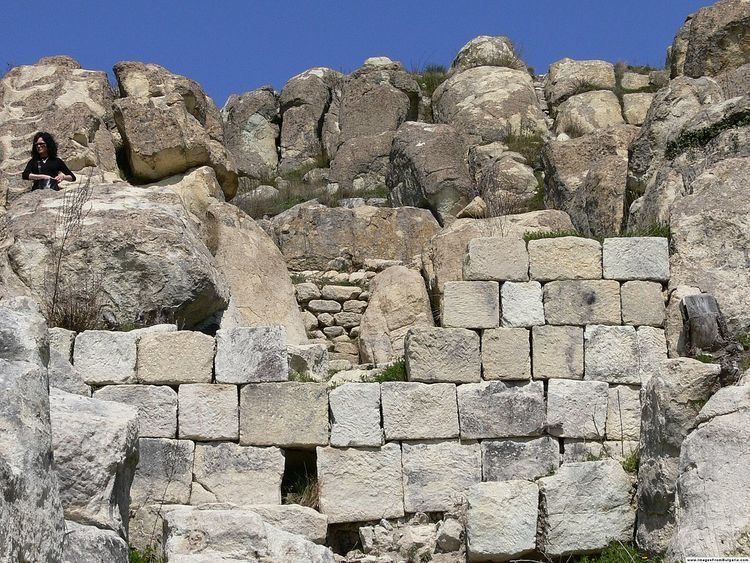Type Settlement Phone +359 2 940 0900 | Condition In ruins | |
 | ||
Address Перперикон, 6685 Кърджали, Bulgaria Hours Open today · 8AM–7PMMonday8AM–7PMTuesday8AM–7PMWednesday8AM–7PMThursday8AM–7PMFriday8AM–7PMSaturday8AM–7PMSunday8AM–7PMSuggest an edit Similar The Stone Mushrooms, Belintash, Dyavolski most, Bachkovo Monastery, Devil's Throat Cave | ||
Treasures of bulgaria perperikon messages from the beginning of time
The ancient Thracian city of Perperikon (also Perpericon; Bulgarian: Перперикон, Greek: Περπερικον) is located in the Eastern Rhodopes, 15 km northeast of the present-day town of Kardzhali, Bulgaria, on a 470 m high rocky hill, which is thought to have been a sacred place. The village of Gorna Krepost ("Upper Fortress") is located at the foot of the hill and the gold-bearing Perpereshka River flows near it. Perperikon is the largest megalith ensemble in the Balkans.
Contents
- Treasures of bulgaria perperikon messages from the beginning of time
- History
- The name Perperikon
- Church
- Honour
- References
It is thought that the famous Temple of Dionysius is located at this location. A visitor centre is being constructed at a cost of 2.4 million Euros funded by the EU.
History
Bulgarian archaeologist Nikolay Ovcharov started the excavation works at Perperikon in 2000, and revealed the remains of ancient architectural complex.
Human activity in the area dates back to 5000 B.C. The first traces of civilization on the hill date from the Bronze Age, while the ceramics found on the place date from the Early Iron Age, as well as the impressive round altar, almost 2 m in diameter, hewn out of the rocks. At Perperikon, a twelve days' journey from the sea, Medokos called himself king of Thrace after Sitalces's death in 424 BC, but failed to hold a throne.
Archaeologists have uncovered a giant multi-story palace and an imposing fortress built around the hill, with walls as thick as 2.8 m. These date from the time of the Roman Empire. Temples and residential quarters were also constructed in the fortress. The megalithic complex has been laid in ruins and re-erected many times throughout history.
The name "Perperikon"
The name Perperikon (originally Hyperperakion, shortened by scribes to Perperakion or Perperikon) dates from the Middle Ages. There are at least two theories about the origin and meaning of the name, both associating it with gold and the gold-mining done in the region.
Church
A church pulpit was found by Bulgarian archeologists at the peak of the Thracian rock sanctuary on 10 September 2005. It is thought to be the first finding of the kind in Bulgaria. The pulpit was probably built at the end of the 4th century AD or the early 5th century during the reign of Byzantine Arcadius and coincided with the period of the christening of the Thracians in the Rhodopes area.
It has the form of a single nave basilica of 16.5 m length, which is the most typical form of an early Christian religious temple. The pulpit, which is almost untouched by time, is richly decorated with stone-carved ornaments. An eagle with widespread wings is clearly seen on the rock. It also bears five inscriptions in Greek, which are yet to be explained but which archaeologists suppose are liturgical writings.
One hypothesis suggests the church existed until the 14th century when it was levelled by the Ottoman invaders. At about that time it was probably sealed up and abandoned.
Honour
Perperek Knoll on Livingston Island in the South Shetland Islands, Antarctica is named after the settlement of Perperek in connection with the Thracian holy city of Perperikon.
